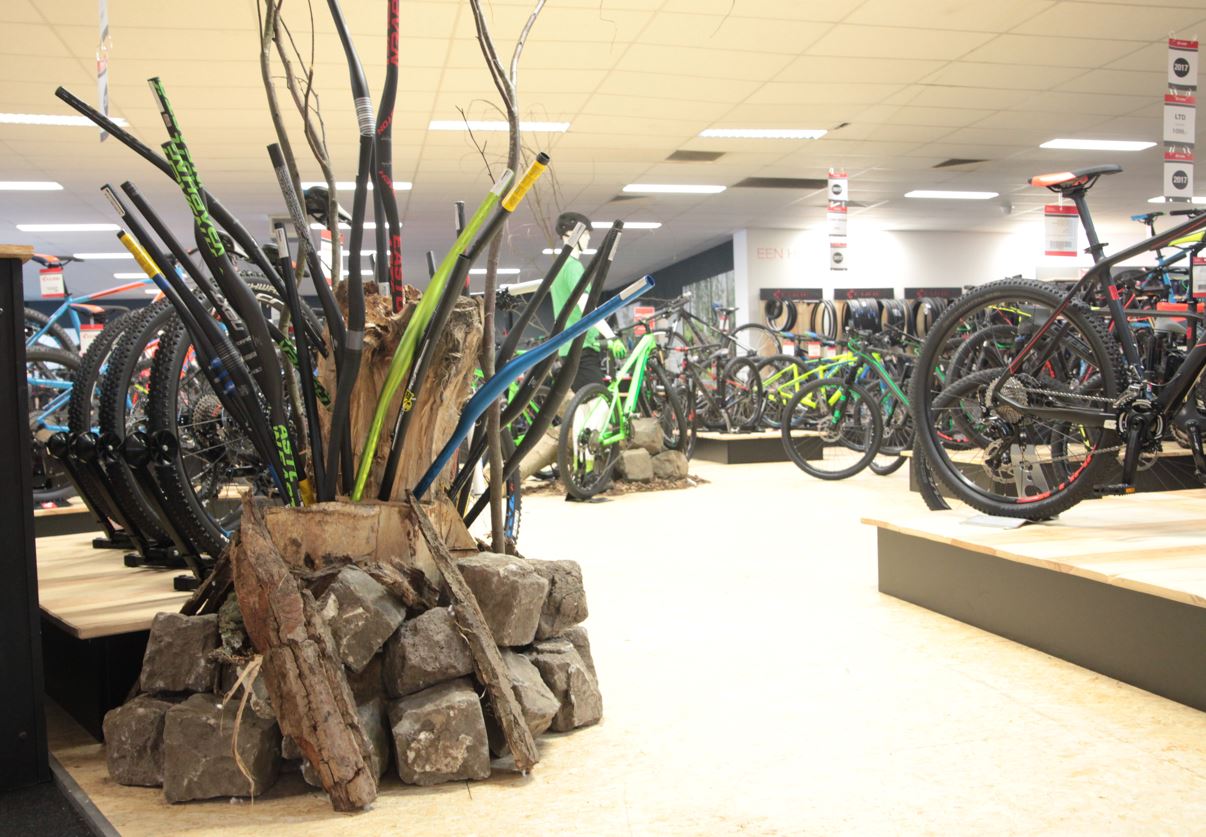Opening a bike shop: a business plan checklist for upstarts
You love bikes, you think you’re business savvy and a window of opportunity exists to go it alone and open a bike shop. So, it’s business plan time. Duncan Moore puts himself in the shoes of the upstart and details all the micro considerations that must be addressed before you pass go…
When COVID first hit and the world went into lockdown it was boom time for the cycle industry; everyone wanted to start riding again and bikes sales soared alongside workshop service and repair work. This didn’t go unnoticed by the general public either as people working from home or idling hours away on furlough began to think about what they wanted from life and the chatter on various forums and Facebook groups suggests opening a bike shop seems like a really good idea. But what is the reality of making that dream come true?
There’s a joke in the cycle industry that gets rolled out every time some asks about opening a bike shop – How do you make a small fortune in the bike trade? Start with a large one. The sad thing is that it is all too easy for this to be the reality of opening a bike shop but how can you avoid the mistakes that make this less of a joke and reality for many who try?
If I was being cruel, I could say don’t open a shop and in so doing save yourself a whole load of heartache and financial misfortune, but if you’re reading this that’s not what you want to hear. So, let’s take a look at how to open a shop without losing your shirt…
When it comes to opening a bike shop, just like starting any other business, the first thing you need to do is put together a business plan. It needn’t be a scary as it sounds either. Basically, it is a way of outlining your idea and justifying it to others (such as your bank manager). It’s all about the how what and whys of what you plan to do. Don’t think of it as a chore that has to be done before you can get on with the fun stuff but view it more as a set of guidelines and goals that can be ticked off as each piece plan is completed. Don’t be afraid to show it to friends either, a second set of eyes may spot a glaring error that you’ve missed or be able to provide valuable insights and suggestions.
That’s as far as I’m going to go with telling you about having a business plan. A comprehensive guide to writing one could be a feature in its own right. However, what I’ll do is talk about the points to consider when putting your plan together.
It’s all very well deciding that you want a bike shop but what is the point of it? Why should people come to your store? What is your USP (unique selling point)? If you have a Halfords nearby then forget about concentrating on kids’ bikes as you’ll never get near the big H on price. However, you could make high-end service work your USP as that is something that is perceived as not being a Halfords’ specialism. What’s the local scene like where you are thinking of setting up? If there’s a strong road club then MTBs are not going to sell very well, if the market isn’t there the product won’t sell.
And while you’re looking at what other shops in the area think about where they are located and what their target market is. If you think a workshop-based business is the way forward for you, targeting the commuter market then an out-of-town location isn’t going to work. On the other hand, if you’re planning on concentrating on bike sales then think about how customers are going to get to your store. Is there plenty of parking space available for those looking to collect their new ride?
Now you know where you want to be it’s time to start drilling down into the nitty gritty. Have you considered how long the lease will be on the property? What if you want to leave before the term is up because you’ve been really lucky and made a success and need bigger premises or it’s failed and you simply need to get out. How much are the business rates and utilities and how much will you need to make each year to cover these and all the other costs we’ve yet to discuss?
 What about the bike shop property itself? Can you make any changes to it, such as fitting security shutters? Will it be big enough to allow the business to grow? What happens when you need to store numerous uncollected repair jobs and new stock and still have space to operate? Have you any idea how much space empty bike boxes can take up when you’re waiting for a refuse collection, a collection that you’re also going to have to pay for. I’ll warn you now those hidden costs are going to keep cropping up and if you don’t account for them from the off they’re going to come back and bite you.
What about the bike shop property itself? Can you make any changes to it, such as fitting security shutters? Will it be big enough to allow the business to grow? What happens when you need to store numerous uncollected repair jobs and new stock and still have space to operate? Have you any idea how much space empty bike boxes can take up when you’re waiting for a refuse collection, a collection that you’re also going to have to pay for. I’ll warn you now those hidden costs are going to keep cropping up and if you don’t account for them from the off they’re going to come back and bite you.
Okay, so you now know what market sector you’re going to be targeting and where you’ll be doing it but will you be able to get the brands you want to make this work? This is another piece of homework to do when you first think about opening a shop; what brands are available locally? Manufacturers and distributors can be choosy about who they supply and territory plays a big part in this decision.
Do not even think about trying to get any of the big bike brands, they have their dealer networks in place and do not need to concern themselves with new accounts. Now add in ongoing supply chain issues, with even well-established operations having trouble getting bikes, and see how far you get ordering stock. However, do not be tempted to go to the other extreme and get an account with an obscure brand that no one has heard of. The public won’t be interested and what happens with quality control and warranty support when you have problems?
Once you do find bike and P&A suppliers who are happy to work with you, you’re going to need deep pockets to get started. While established businesses can and do get credit any new operation will be on pro forma terms – you place an order, you pay for it and then it’s delivered. Can you afford to have all of your capital tied up in stock?
Here’s another thought on stock, what do you need to carry? Once again, it’s time to consider your potential customer base. Will you need to carry 11- and 12-speed chains or will you need to have plenty of old fashioned seven- and eight-speed chains? Now do this again for wheel sizes so you know which innertubes to hold; calliper brake pads and disc brake pads; and on and on with all service and consumable parts.
Realistically, the only way you can truly get an understanding of what you need to carry is to get experience in an existing shop. Yes, you might think you know all there is to know about retail and you’ve always done your own bike repairs there will be lots of things waiting to trip you up.
On the retail side of things do you know how to reconcile the shop till and card machine at the end of the day? In fact, have you considered how much you’ll have to pay for a card machine and associated bank charges every time you pay the week’s takings in? Oh yes, it’s those hidden costs again.
This is probably a good time to mention the ACT. The Association of Cycle Traders, to give it its full name, is the business organisation for cycle retailers and once you’ve paid your annual membership it can provide help and assistance with numerous issues. The ACT can help with training, customer credit options, merchant services and much more.
Now back to what you need to know and let’s suppose you have experience in retail but what about the mechanical side of the business? How comfortable are you doing PDI checks? Can you bleed hydraulic brakes and service Di2 and eTap systems? What about rebuilding an old Sturmey Archer three-speed hub? Of course, you can sign up for one of the accredited cycle mechanic training courses, again the ACT can help here, but again this is more expense that you night no not have at first considered. Don’t think that just because you’re planning on employing a mechanic that you don’t need to have a deep understanding of cycle mechanics. What happens when the mechanic is off sick, takes a holiday or just leaves? You’ll have to cover his work.
 Okay, so you think you can take care of the mechanical side of things yourself well that means you’re going to need someone to look after the retail side of the business. Don’t kid yourself that you can do both. You can’t expect a customer to wait while you finish that tricky repair that really needs three hands. Whichever way you go with staff it’s not just a case of hiring someone, and that is in itself another feature. You have to take into account how and when to pay them, calculate their income tax and national insurance, sick pay, holiday pay and on it goes.
Okay, so you think you can take care of the mechanical side of things yourself well that means you’re going to need someone to look after the retail side of the business. Don’t kid yourself that you can do both. You can’t expect a customer to wait while you finish that tricky repair that really needs three hands. Whichever way you go with staff it’s not just a case of hiring someone, and that is in itself another feature. You have to take into account how and when to pay them, calculate their income tax and national insurance, sick pay, holiday pay and on it goes.
Tax returns, VAT submissions, supplier invoices all of these need to be taken care of too and you can either add them onto your already exhaustively long workday or get someone else to do it for you. That’s why it’s a good idea to use an accountant, which is another cost. However, a good accountant should be able to help you in ways you’d never imagine and save you money in the long term.
While you’re considering the cost of employing an accountant take a moment to think about other services that you might think you can look after yourself but would be better off having some else deal with. For example, once you’ve chosen a name for your business and registered that matching domain name, another hidden cost there, are you confident in designing a website for the shop? Sure, lots of ISPs and hosting companies offer template packages but will that work for you and what happens if you need to make updates or changes?
You also need to consider what you want the website to do for you. Will it just be a way to let people know where you are, what you stock and what services you offer, or do you plan to offer online sales too? If it’s the latter option, then you’ll also have to invest in electronic stock control and point of sale and at the risk of sounding repetitive, that’s another cost to consider.
Nor is this the end of the costs that you might not have considered. Have you thought about the stationery you’ll need, letterheads, receipts, business cards, and how much you’ll need to spend on them? What about the shopfront signage and then when you’re back indoors will the existing fittings, assuming you’re taking over an existing retail unit, work for a bike shop? Sure, suppliers will provide point of sale displays but to qualify for them as freebies you’re going to have to buy a lot of stock. How are you going to display your bikes and store the ones in the workshop awaiting repair or collection? While you’re looking at the cost of those racks take a look at the price of a professional level repair stands too. If you think that’s bad wait until you start totalling up all the tools you’re going to need, just basics stuff like bottom bracket and freewheel removal tools, never mind the specialist kit like reamers and cutters for headtubes and bottom bracket shells.
If I haven’t put you off opening a bike shop by now here’s one last consideration – forget about riding your own bike. I speak from personal experience here if you’re not too tired from working all day every day when you do get some time to yourself you’ll want nothing to do with a bike. That’s the reason I write about bicycles and cycling these days rather than selling and repairing them…
Further reading – advice from those bike shop owners who have been there and done it before.



